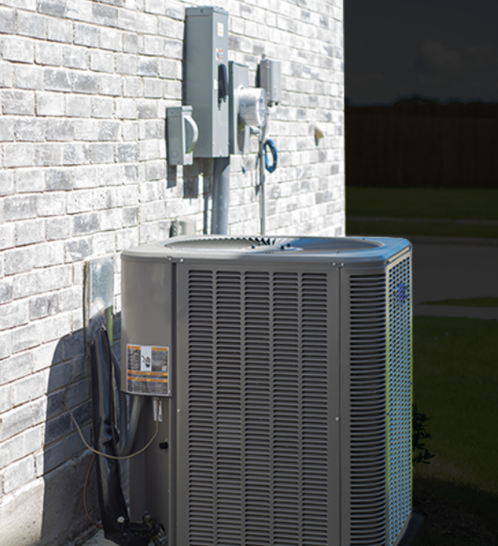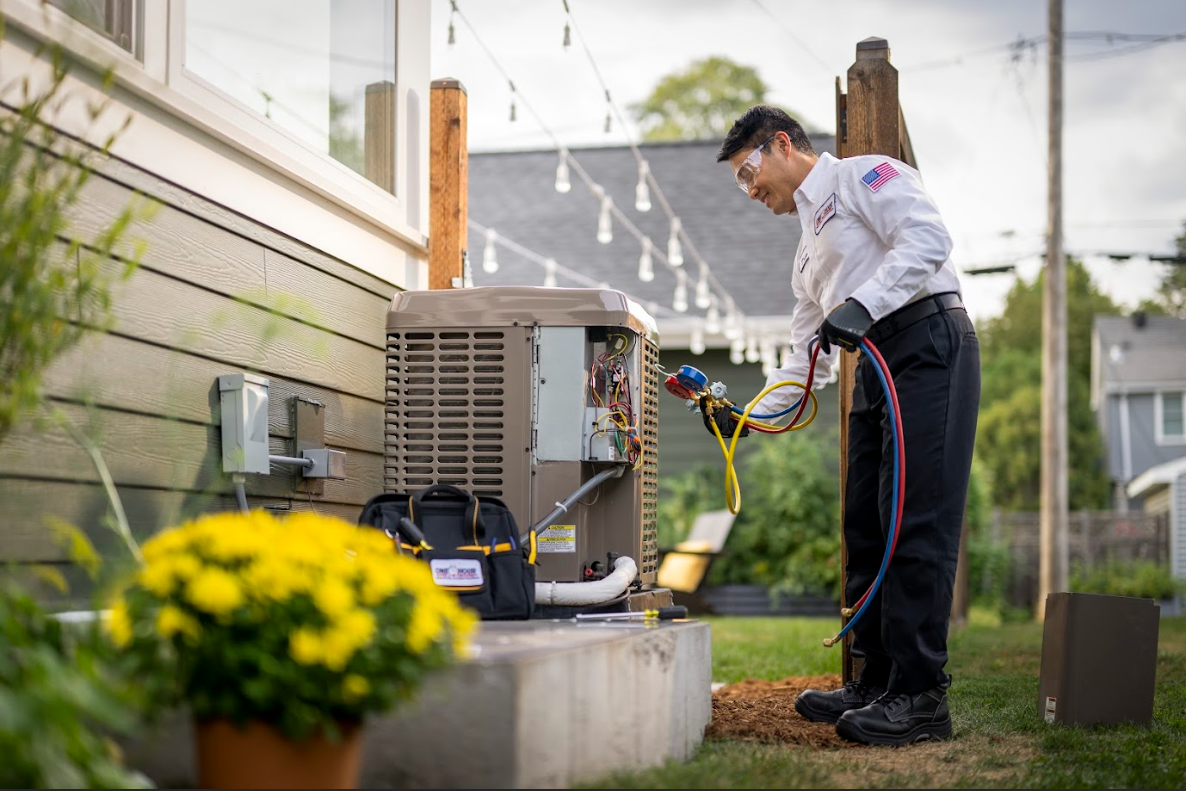
Why upstairs feels hotter than downstairs
Anyone with a two-story home in Ogden has felt it: the thermostat says 72, but the upstairs bedrooms feel closer to 78. On summer afternoons, second floors in areas like East Bench, Shadow Valley, and Washington Terrace often run several degrees warmer than the main level. That difference is not a mystery. It comes down to physics, duct design, solar load, and how real homes in Weber County are built and used.

This article explains the common causes, what a homeowner can try, and when it is smarter to bring in a local HVAC Ogden technician for testing, balancing, or upgrades that actually fix the problem.
Heat rises — but that’s only part of it
Warm air is buoyant and moves upward, so any heat produced on the main level will drift to the second floor. Cooking, showering, even large TV sets add sensible heat. In the afternoon, the roof and attic heat up from strong high-altitude sun. That heat radiates down through the ceiling and warms upstairs air. Meanwhile, many Ogden homes have return grilles mainly on the first floor. The system pulls cool air from downstairs, sends it back to the coil, and starves the upstairs of return airflow. The outcome is predictable: downstairs feels fine, upstairs feels stuffy.
Duct design and static pressure issues
Many two-story homes built from the 1980s through the 2000s share a pattern. The furnace sits in the basement or a main-level closet. Supply trunks reach upstairs through tight chases with lots of elbows. Long runs plus undersized ducts increase static pressure. Air follows the path of least resistance, so more conditioned air dumps into short, straight first-floor runs, while far bedrooms get a trickle.
Technicians see this daily on service calls in Ogden. A typical reading might show 0.9 inches of water column external static pressure on a system rated for 0.5. That extra pressure cuts airflow, reduces coil performance, and further weakens supply to the second floor. Even with a strong blower, the system cannot push past a restrictive design.
Attic conditions in Ogden’s climate
Ogden’s dry heat, higher elevation, and big temperature swings hit attics hard. On a 95-degree July day, an unvented or under-insulated attic can exceed 130 to 150 degrees by midafternoon. That heat radiates into upstairs ceilings and knee walls. If the attic has leaky or unsealed can lights, the upstairs gains even more heat through air leakage. Ducts that run through that attic pick up heat too. By the time air reaches the bedrooms, it can be several degrees warmer than at the coil.
R-38 ceiling insulation is common in newer homes. Older homes around historic districts may have less. Even small gaps around attic hatches, bath fans, and top plates can add up to a real temperature penalty upstairs.
Solar gain on west- and south-facing rooms
Homes near 12th Street, Harrison, or in new builds west of I-15 often have large second-floor windows. South and west orientations collect strong afternoon sun. Without low-e glass, interior shades, or exterior shading, the room can gain thousands of BTUs of heat during peak hours. The HVAC system tries to keep up, but the load spikes right when the attic is hottest and duct losses are worst.
Return air and door undercuts
Many second-floor hallways have a single return grille. If bedroom doors stay closed, thin door undercuts may not allow enough air to reach the hall return. The supply pushes air into the room, but without a return path, pressure builds and supply airflow drops. The room grows warm and stale. Jumper ducts, transfer grilles, or dedicated returns solve this, but many homes were never set up that way.
Thermostat placement skews comfort
A downstairs thermostat sees stable temperatures due to slab mass or basement coolth. It often satisfies quickly and shuts the system down before the upstairs cools. Zoning can solve this by giving the second floor its own control. Without zoning, homeowners end up dropping the setpoint five or six degrees to tame the bedrooms, which overcools the first floor and wastes energy.

What a homeowner can do right now
Small fixes can reduce the temperature gap. These steps are safe, low-cost, and often pay back fast:
- Set the blower to run “on” during peak heat. Continuous low-speed circulation evens temperatures between floors.
- Close downstairs blinds and add reflective shades upstairs. Reduce afternoon solar gain, especially on west-facing rooms.
- Adjust supply registers: slightly throttle downstairs supplies and fully open upstairs registers. Do not close more than a third of downstairs airflow to avoid freezing coils.
- Replace a clogged filter and use the correct MERV rating. Too high a MERV can choke airflow on older blowers.
- Add a box fan at the base of the stairs blowing up during the afternoon. It is crude, but it moves cool air upward.
If those steps https://www.onehourheatandair.com/ogden help, the underlying issue is airflow balance. If they barely move the needle, the home likely needs duct or insulation corrections.
Professional fixes that work in Ogden homes
Technicians who work in HVAC Ogden every week tend to focus on five areas because they solve most upstairs heat complaints with predictable results.
- Duct balancing and minor modifications: Measure room-by-room airflow, then adjust dampers, replace restrictive boots, or upsize a few long runs to the second floor. On many homes, this drops the upstairs-downstairs split from 6 to 2 degrees.
- Add or improve return air upstairs: Install a central second-floor return or use transfer grilles from bedrooms to hall. Restored return paths often improve airflow by 10 to 20 percent to those rooms.
- Attic heat management: Seal top plates and can lights, add baffles for soffit ventilation, and bring insulation to R-49 or better. In older Ogden homes, these steps can cut peak afternoon bedroom temperatures by 3 to 5 degrees without touching the HVAC.
- Zoning or a dedicated system: Add a zone control with motorized dampers and separate thermostats for each floor. For some layouts, a small ductless head in a hot bonus room fixes the chronic problem with minimal duct work.
- AC capacity and charge verification: Check superheat, subcooling, and total external static. Correct charge and airflow first. If the system is undersized for solar gain and occupants, right-sizing may be the final step.
A quick story from the field
A two-story in South Ogden near 40th Street had a 10-degree split between floors on 90-degree days. The attic measured 142 degrees at 3 p.m. The air conditioner was properly charged, but static pressure was 0.92 inches. The fix was simple: open hidden balancing dampers to favor the second floor, replace two restrictive upstairs boots, add a 12x12 return in the hallway, and air-seal the attic hatch. Cost was modest and the result was a 2 to 3-degree difference in the next heat wave. No new AC needed.
Signs the system needs professional attention
If any of these show up, a service visit is the right move:
- Rooms with little to no airflow even with registers fully open
- Sweating supply registers or short cycling during hot afternoons
- Upstairs humidity that stays high despite the AC running
- External static pressure above manufacturer specs or noisy ducts
A tech will attach manometers, measure temperature rise and drop, verify charge, and test airflow. The report shows where the system is losing ground and which changes will move the needle the most for the lowest cost.
Costs and realistic expectations
Homeowners often ask for a ballpark. Every home is different, but typical ranges seen in the Ogden area look like this: duct balancing and minor parts often land in the low hundreds; adding a second-floor return can run a few hundred to over a thousand depending on framing; air sealing and insulation upgrades vary widely by attic size; zoning a two-story usually sits in the low thousands; adding a single ductless head for a hot room falls in a similar band. Most want the smallest fix that yields a clear comfort gain, and that is frequently airflow balancing plus better return air.
Why local matters for HVAC Ogden
Ogden’s elevation, dry air, and strong sun create a specific load profile. Shading patterns change with the Wasatch orientation, and many neighborhoods have similar construction styles and duct layouts. A local team sees these patterns daily and knows which adjustments usually pay off. That saves time, and it prevents trial-and-error guesses that add cost without comfort.
Ready for a cooler upstairs?
If the second floor is stealing sleep, there is a fix. Start with simple steps to reduce solar gain and keep the fan moving. If the gap stays wide, ask for an airflow and static pressure test. One Hour Heating & Air Conditioning serves Ogden, North Ogden, Roy, Riverdale, and nearby communities with practical options that match the house, not a script. Request a visit, and get a plan that makes the upstairs feel like the downstairs on the next 95-degree day.
One Hour Heating & Air Conditioning provides trusted furnace repair in Ogden, UT and full-service HVAC solutions for homes and businesses. Family-owned and operated by Matt and Sarah McFarland, our company is built on honesty, hard work, and quality service—values passed down from Matt’s experience on McFarland Family Farms, known across Utah for its sweet corn. As part of a national network founded in 2002, we bring reliable heating and cooling care backed by professional training and local dedication.
Our licensed technicians handle furnace and AC installation, repair, and maintenance, heat pumps, ductless mini-splits, thermostat upgrades, air purification, indoor air quality testing, humidifiers, dehumidifiers, duct cleaning, zoning systems, and energy-efficient replacements. We stand by a 100% satisfaction guarantee through the UWIN® program and provide honest recommendations to help Ogden homeowners stay comfortable year-round.
Call today for dependable service that combines national standards with a personal, local touch.
One Hour Heating & Air Conditioning
1501 W 2650 S #103 Phone: (801) 405-9435 Website: https://www.onehourheatandair.com/ogden
Ogden,
UT
84401,
USA